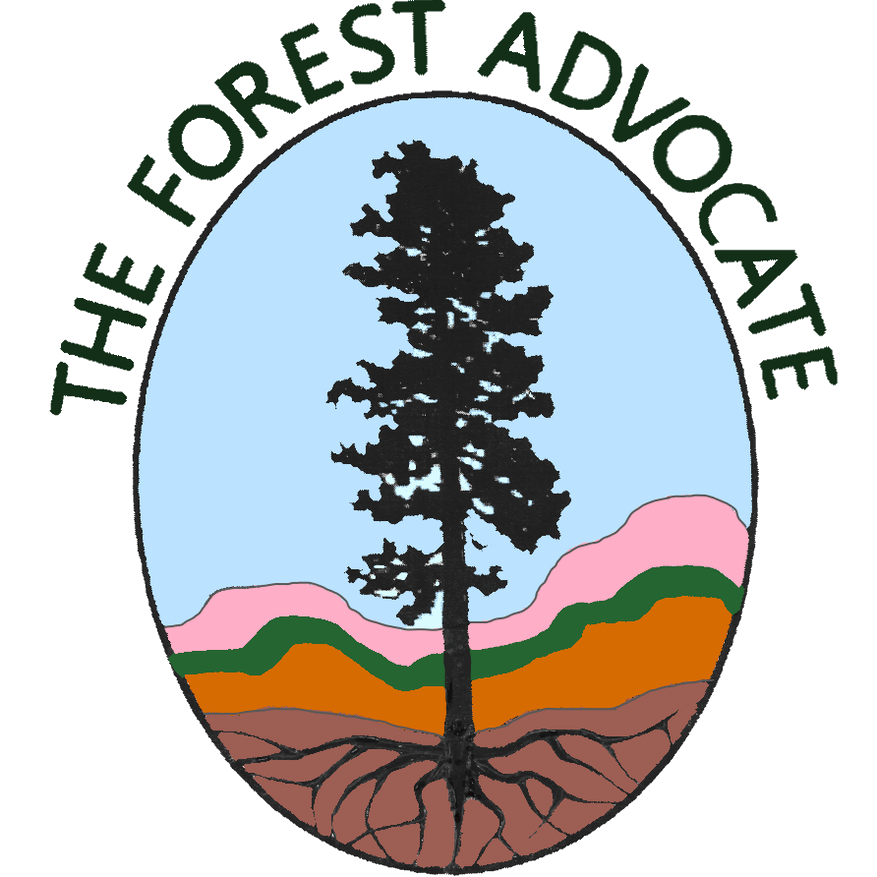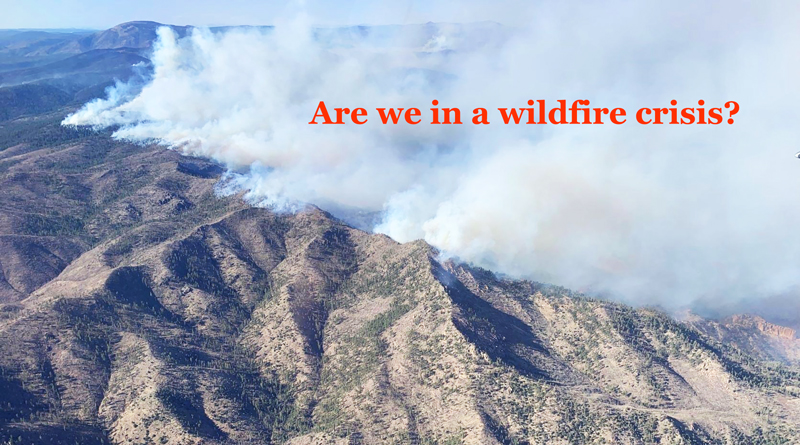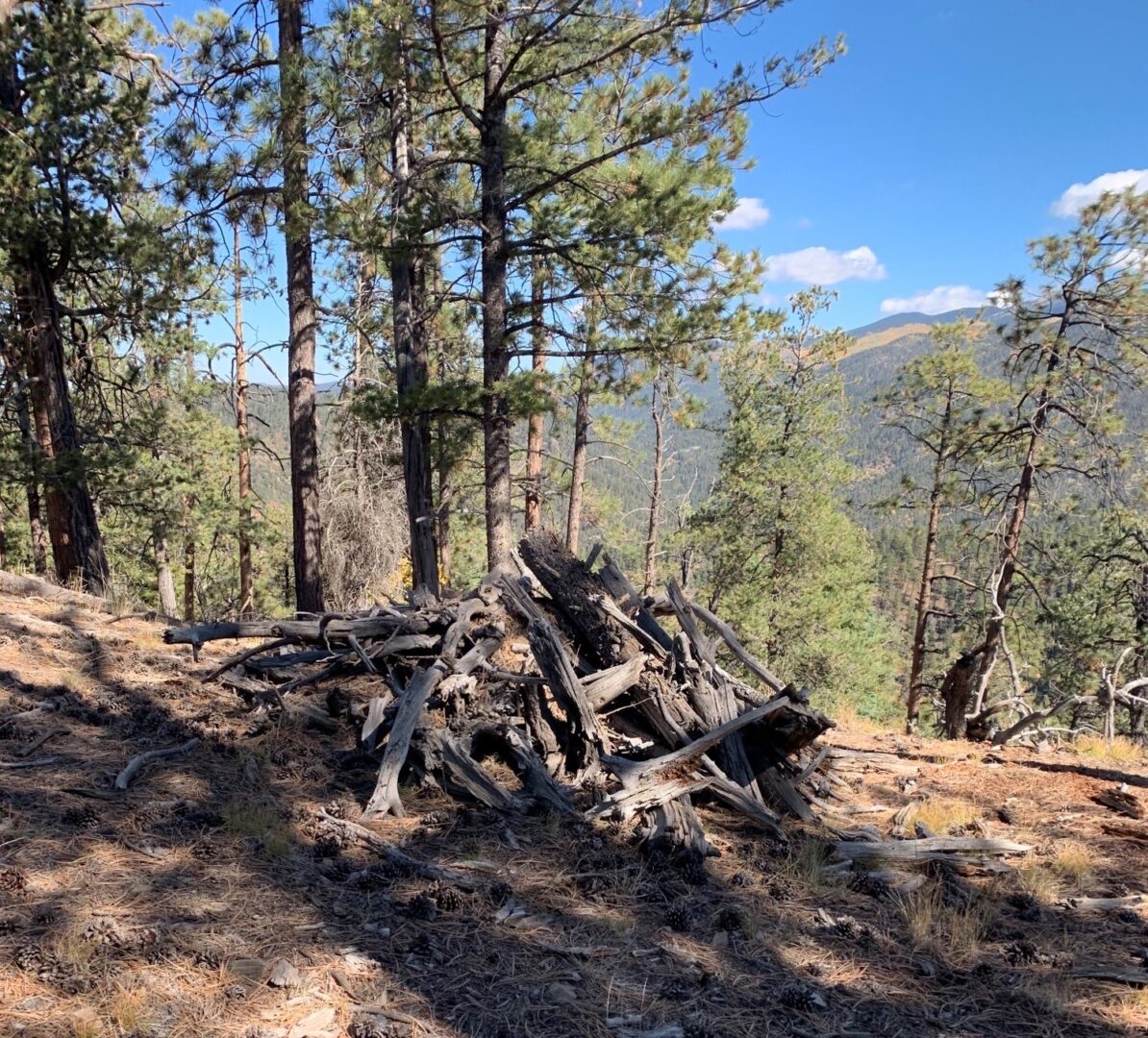|

|
|
|
|
|

|
Cerro Pelado Fire - Photo: US Forest Service
|
|

|
|
The Forest Advocate calculated the number of acres burned in the Santa Fe National Forest during the past decade by wildfire ignited by escaped prescribed burns, versus the number of acres burned by wildfire due to all other causes, including all other human ignitions. The results are stunning. Approximately 387,000 acres were burned by escaped prescribed burns compared to less than 62,000 acres that burned as a result of wildfire from all other causes. Last year's 49,000 acre Cooks Peak Fire is not yet included in the tally, as the investigation is still not complete. You can see a chart of the fires of the past decade, causes of ignition, and acreage burned by each fire here.
|
The Santa Fe Mountains Project plan is to address the wildfire crisis by widespread and aggressive tree cutting and burning. But is it worth it, if in the recent decade over six times as many acres have burned from escaped prescribed burns as from fire ignited by any other cause? Not to mention extensive damage to communities, homes, private land, infrastructure, and to our health. And three human deaths from post-fire flooding. It’s clear the current Forest Service strategy for reducing the impacts of wildfire is not working and is creating a serious hazard.
|
Recently, an online news source published an article I wrote about the three wildfires caused by escaped prescribed burns in the Santa Fe National Forest last year, and the risks and impacts of extensive cutting and burning operations in our forest — After Last Year’s Santa Fe National Forest Wildfires, Forest Management Must be Reconsidered. Included are recommendations for a safer and much more ecologically beneficial approach that supports our forests and communities. Please share this article with anyone interested in protecting our forest. Help change the consciousness of “managing” forests to one of supporting forests, our communities, and our health.
|
Across the West, we have a deficit of wildfire compared to historical levels, although that may not be true for the Santa Fe National Forest due to the large amount of forest burned by escaped prescribed burns. Yet we don’t know what is the optimal amount of wildfire in a warming and drying climate.
|
Allowing wildfires to burn naturally out in the back country, when safe to do so, can be ecologically beneficial. Carefully thought out, limited and light-handed fall prescribed burns may be appropriate. Some very limited thinning may be necessary, but again should be carefully considered and site specific. Most of all, let’s restore our forest with strategies to hold more moisture in the forest, thereby reducing fire risk.
|
Many of us have urged the Forest Service to do a cost/benefit analysis of the Santa Fe Mountains Project proposal, especially after the three major wildfires caused by escaped prescribed fire that burned in the Santa Fe National Forest last year, including the largest wildfire in New Mexico history. They have stated that they are not required to do a cost/benefit analysis and do not intend to do one.
|
Instead, the Forest Service has moved ahead, despite last year’s fires and the objections of much of the public, and has begun implementation of the Santa Fe Mountains Project without further NEPA analysis that includes a conservation alternative. There are thinning operations planned to commence soon in the Tesuque Basin area of the Project. See map of thinning units here. This thinning will require extensive subsequent prescribed burns, both pile and broadcast burns. Slash piles from thinning cannot just be left behind, as they are a fire hazard. There is also some thinning/burning work being planned for around the Glorieta Adventure Camps, building off of work that has already been done on private lands nearby.
|
Additionally, a 650 acre prescribed burn is planned for the week of October 16 and after, on the North Aztec Springs section of the Santa Fe watershed, just to the west of Hyde Park Estates. Depending on the weather, the Forest Service plans to proceed even though there are unburned slash piles to the north of the burn area that could present fire risk. Pile burns are being planned for this winter.
|
It’s critical for a thorough cost/benefit analysis to be done now. It’s the only reasonable and responsible thing to do.
|
Please keep writing to elected representatives. At some point more will listen – as the Santa Fe County Commission did. Ask representatives to genuinely consider the risk and costs of the Forest Services’ aggressive cutting and burning plans to our forest, communities and health, and ask if they truly believe that the benefits are likely to outweigh the risks and costs. Remind them that without escaped prescribed burn wildfires, less than 62,000 acres would likely have burned in the Santa Fe National Forest during the past decade (with the possible addition of the Cooks Peak Fire). Igniting major wildfires is not the solution to the “wildfire crisis.”
|
It is now easier and more convenient to write to elected representatives utilizing The Forest Advocate website. On the “Contact information for selected officials” page, there are buttons that can copy all the officials’ email addresses at once, and there are also buttons to copy groups of email addresses, such as the County Commissioner’s addresses, or State House of Representatives’ address – and also one for Forest Service officials. You can access the officials' contact page from the blue bar a short way down on The Forest Advocate home page. There is also a button in the blue bar for guide points for writing our elected representatives. Feel free to use these guide points in your emails, or to put them into your own words, along with your own opinions, information and requests.
|
It’s much better to have individual emails than petitions or form letters. Take a little time and write about who you are, and why the Santa Fe National Forest is important to you, and to all of us. Then encourage our elected representatives to stand for our forest and communities. Ask them — how many more agency-caused wildfires should we tolerate while the Forest Service and their collaborators continue to try to get a fundamentally flawed and outdated forest management strategy to work? How much more damage to our forests can we tolerate from aggressive and heavy-handed cutting and burning treatments, done by an agency that does not have the capacity to implement them safely? Why would we support elected representatives unless they support what is critically important to us and to our environment?
|
Tell them that we want Environmental Impact Statements with a conservation alternative, developed through a community process, for both major Santa Fe National Forest cutting/burning projects. And we want the excessive burning by Forest Service firing operations during wildfire management to end, because fuels treatments, especially such risky treatments, require a lawful analysis process.
|
It’s time for our elected representatives to insist that the Forest Service find a better strategy to restore and protect forests and communities, and to comprehensively analyze potential effects of projects, including the potential for escaped prescribed burns.
|
|
|

|
Thinning slash pile in the Santa Fe Watershed, to the north of the Aztec Springs prescribed burn unit - Photo: US Forest Service
|
|
|
|
|
|
|